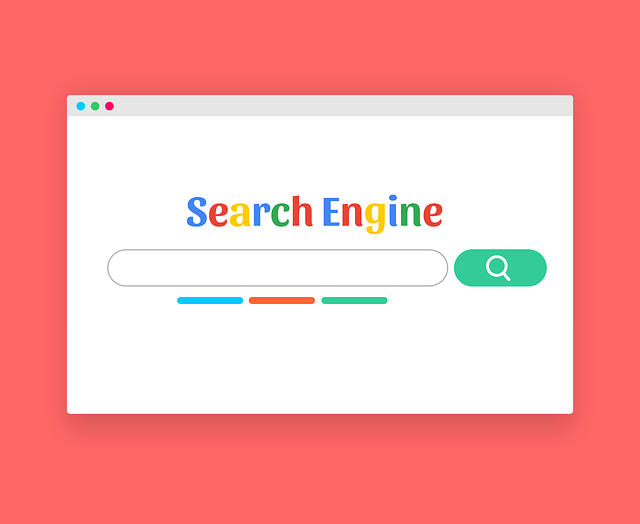Internal linking, powered by AI SEO linking tool plugins, revolutionizes website optimization. These tools automate strategic link placement, boosting page authority, crawlability, and user experience. By analyzing content and suggesting relevant links, they enhance search engine rankings and drive organic traffic. Choosing a plugin with intelligent algorithms, customizable strategies, and easy analytics ensures effective internal linking. Installation, configuration, and regular monitoring lead to improved SEO performance in today's digital era.
In the ever-evolving digital landscape, effective internal linking is a cornerstone of successful SEO strategies. Traditional methods, however, can be laborious and time-consuming. This is where an AI SEO linking tool plugin steps in as a game-changer. By leveraging artificial intelligence, these plugins automate the process, enhancing content connectivity and boosting search engine rankings. In this article, we explore the transformative power of AI in internal linking optimization, guiding you through its impact, implementation, and measurement for tangible SEO improvements.
- Understanding Internal Linking and Its SEO Impact
- The Emergence of AI in Content Optimization
- Unlocking Efficiency with AI SEO Linking Tools
- Key Features to Consider in an AI Linking Plugin
- Integrating the Plugin: A Step-by-Step Guide
- Measuring Success: Tracking SEO Improvements
Understanding Internal Linking and Its SEO Impact

Internal linking is a fundamental aspect of website structure that often gets overlooked, yet it plays a pivotal role in enhancing search engine optimization (SEO) and user experience. It involves creating hyperlinks between relevant pages within your site, guiding users and search engines alike to navigate through your content effectively. Proper internal linking strategies can significantly impact your SEO efforts by improving page authority, boosting crawlability, and helping search engines understand the hierarchy and relevance of your web pages.
Using an AI SEO linking tool plugin offers a strategic advantage in optimizing this process. These advanced tools leverage artificial intelligence to analyze your website’s content, identify relevant internal links, and suggest strategies for optimal distribution of link equity. By implementing an effective AI SEO linking tool strategy, you can ensure that your website’s architecture is search-engine friendly, leading to better rankings, increased organic traffic, and improved overall SEO performance.
The Emergence of AI in Content Optimization

The rise of Artificial Intelligence (AI) has brought about a paradigm shift in content optimization, especially when it comes to search engine optimization (SEO). One of the most significant advancements is the emergence of AI SEO linking tools that revolutionize how websites enhance their internal linking structures. These innovative plugins act as powerful assistants, automating tasks that were once manual and time-consuming. By leveraging machine learning algorithms, they analyze content, identify relevant links, and suggest strategic placements, ultimately improving user experience and search engine rankings.
AI SEO linking tool optimization is not just about automation; it’s a data-driven approach. These tools provide valuable insights and tips on creating an efficient network of internal links, ensuring each click has purpose. From identifying anchor text variations to suggesting link placement within content, these plugins offer a strategic AI SEO linking tool strategy that can boost website visibility and drive organic traffic.
Unlocking Efficiency with AI SEO Linking Tools

In today’s digital landscape, optimizing internal linking for search engine optimization (SEO) is no longer a manual, time-consuming task. Unlocking efficiency with AI SEO linking tools has become a game-changer for many content creators and marketers. These innovative plugins offer a strategic keyword-driven approach to streamline the process of building relevant links within your website’s content, enhancing its overall SEO performance.
By leveraging AI technology, these tools analyze your existing content, identify opportunities for internal linking, and suggest optimizations tailored to your site’s unique structure and goals. Whether you’re looking to create a comprehensive tutorial on an AI SEO linking tool strategy or simply want to dive into the optimization process, these plugins provide valuable insights and automate tedious tasks, allowing you to focus on creating high-quality content that resonates with your audience.
Key Features to Consider in an AI Linking Plugin

When choosing an AI SEO linking tool plugin, several key features stand out. First and foremost, look for a plugin that offers intelligent link suggestion algorithms. These should analyze your content and propose relevant internal links based on semantic relevance and user behavior data, enhancing both user experience and search engine visibility.
Additionally, consider plugins with customizable link building strategies. This allows you to tailor the tool’s behavior according to your site’s unique needs, ensuring that linking patterns align with your AI SEO linking tool strategy. Features like bulk editing capabilities and easy-to-understand analytics dashboards are also valuable for efficiently managing and monitoring your internal links. Following AI SEO linking tool tips can significantly improve these plugins’ effectiveness.
Integrating the Plugin: A Step-by-Step Guide

Integrating an AI SEO linking tool plugin is a straightforward process designed to streamline your website’s internal linking structure, boosting its search engine optimization (SEO) potential. Here’s a step-by-step guide to help you get started:
1. Choose Your Plugin: Research and select a reputable AI SEO linking tool plugin that aligns with your website’s needs. Look for features like automatic link suggestion, keyword analysis, and easy integration with your content management system (CMS).
2. Install and Activate: Once chosen, install the plugin through your CMS dashboard. Follow the on-screen instructions to activate it. Most plugins provide clear, user-friendly interfaces designed to guide you through the setup process without any technical expertise required.
3. Configure Settings: After activation, take time to configure your plugin’s settings according to your SEO strategy. This may include setting target keywords, defining page categories, and personalizing link distribution preferences. Remember, an AI SEO linking tool tips and strategies can significantly enhance these configurations.
4. Analyze Your Site: Utilize the plugin’s analysis tools to scan your website for existing internal links and identify areas for improvement. These AI SEO linking tool tutorials often provide valuable insights into your site’s current linking structure and suggest strategic changes.
5. Implement Recommendations: Based on the analysis, implement the plugin’s recommended link placements. This can be done automatically or manually, depending on your preference and the plugin’s capabilities. Regularly monitor your website’s performance to ensure the AI SEO linking tool strategy is delivering desired results.
Measuring Success: Tracking SEO Improvements

Measuring success is a vital aspect of any SEO strategy, and when utilizing an AI SEO linking tool plugin, tracking improvements becomes more accessible than ever. These advanced tools provide detailed analytics, allowing marketers to monitor the impact of internal links on search engine rankings. By analyzing keyword performance, page views, and user engagement, you can identify high-value pages and optimize them further.
An AI SEO linking tool tutorial might guide users on setting up tracking metrics specific to their goals. This could include defining key performance indicators (KPIs) such as click-through rates, time spent on pages, and conversion rates. With these insights, you can adjust your AI SEO linking strategy, ensuring that each internal link contributes to the overall improvement of your website’s SEO.
